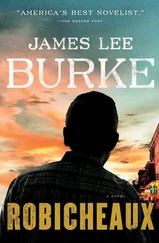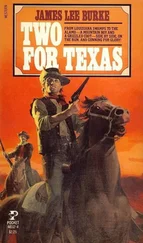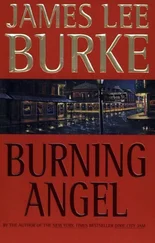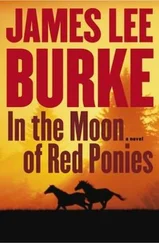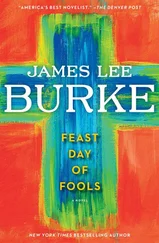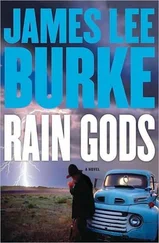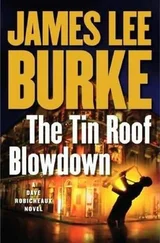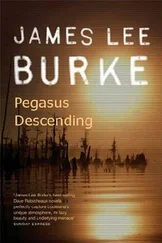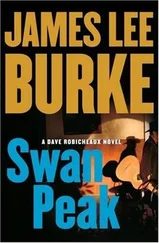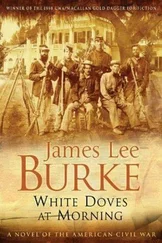He climbed down from the back and shut the doors. He was going to leave the truck and hitchhike to the city. It would be better to leave it here than in town. An automobile came down the highway and slowed as it passed the farm road. It pulled off on the shoulder to make a U-turn and came back towards Toussaint. He threw the tire iron under the truck as the car turned into the road and caught him in its headlights. He walked to the cab and opened the door to get in. The car drew abreast of him and stopped. On the door was the white emblem of the state police. Two officers sat in the front seat. The driver turned a flashlight on Toussaint.
“What are you doing back here?” he said.
“Pulled off the road to get some sleep.”
“Most companies tell their drivers to stay on the highway.”
“Mine’s different.”
“Who do you work for?”
“Bonham Shipping Company in New Orleans.”
“Let me see your papers.”
“I ain’t got any. Take the light out of my eyes.”
“See what he’s carrying,” he said to the other officer. The far door opened and the second officer got out and went to the back of the truck.
Toussaint looked around him. It was too far to the woods, and the fields afforded no cover. There was nothing to do except stand there and listen to the whirr of the cars on the highway and look into the hot circle of light held in his face.
“The lock’s broken,” the second officer said from behind the truck, and then, “This is the one. There’re furs all over the place. He’s been breaking open the crates.”
The driver got out of the car and took the handcuffs from the leather case on his belt. He snipped them open.
“You don’t need them,” Toussaint said.
“Put out your wrists.”
Toussaint held them out.
“What’s wrong with your hand?”
“I broke it.”
“All right. Get in the back.”
The second officer returned and got in beside the Negro. He handed a small notebook to the man in the front seat.
“Here’s the license number,” he said. “It’s the truck that was stolen out in Gretna yesterday.”
Toussaint looked out the window at the fields and listened to the whirr of the cars on the highway.
“They add on three years for auto theft,” the driver said.
“I didn’t steal it,” Toussaint said.
“Where did you get the furs?”
“Bonham paid me to drive them out of the state.”
“How did you think you were going to get past us?” the second officer said.
“I didn’t have nothing to do with no robbery. The stuff you want is already in Mississippi. Them pelts is worthless.”
They didn’t understand Toussaint and ignored him. He looked at the fields and said nothing while the officer in front used the radio to put in a call for another car to come pick up the stolen truck. Both of the policemen felt they had done a good job in capturing Toussaint and the load of furs. While they waited for the other car to arrive, the driver asked Toussaint how he had hurt his hand. When the Negro told him the driver said he should have stuck to prizefighting.
Book two
Big midnight special
for Robert Lee Sauls
executed in the Calcasieu parish jail
Lake Charles, 1955
The main room (called the drunk tank) of the parish jail was on the second story of the building. The walls and floor and ceiling were made from concrete. There were two barred and wire-grated windows to each wall. In the summer the room was damp and foul smelling from sweat and lack of ventilation. Once a month the trusties cleaned the room with disinfectant, but it did no good. The stench was always there. There was no way to get rid of it. They scrubbed the concrete with sand and brushes and whitewashed the walls and ceiling, and even sprayed the room with insecticide, but it was useless. The stench was on the men’s bodies, in their clothes, in the tick mattresses; everything in the room had that same thick, sour odor to it.
In the center was a low boxlike structure made entirely of iron that was called the tank. It sat squat and ugly in the middle of the floor, like a room within a room. The walls were painted gray and perforated with small square holes. The tank was divided into cells, each containing four iron bunks welded to the walls. There was a narrow corridor that ran the length of the structure, separating the cells into two opposite rows. It was here in the tank where the stench was worst. There was little air and no lighting and the walls were covered with moisture. Every afternoon at five o’clock the inmates were locked in the tank for the night. It was usually overcrowded, and some of the men slept on the floor in the corridor.
At seven in the morning the jailer opened the door to the main room and the trusties wheeled in the food carts and unlocked the tank. The area outside the tank was called the bullpen, where the men were allowed to move about during the day. The jailer always stood in the doorway and watched the men line up with their tin plates and spoons for breakfast and lunch (there was no supper). There was a white line painted on the floor, forming a six-foot square around the doorway where he stood. This was the deadline, and none of the inmates was allowed across it when the door was open. If they did come past the line, they would be knocked to the floor by either the jailer or one of the trusties. The jailer, large and heavyset, was a careful man and took no chances.
During the day the men could do as they pleased in the bullpen. The room had to be kept clean, and it was forbidden to throw anything out the windows, whether a cigarette end or a scrap of paper, or call down to the people in the street. If a rule was broken, one of two things could happen. Everyone could be thrown in the tank and left there for several days, or the person who broke the rule would be dragged off to the hole, which was in another part of the building. The hole was a cast-iron cage, like the tank, except much smaller in size with enough room for only two men. It was ordinarily used to hold men who were condemned to death and awaiting execution, but since these men were there for only a short time it was usually left free to be used as a place of solitary confinement. On one wall of the hole there was a list of names written in pencil with a date beside each one. These were the men who had been put to death upstairs.
Avery’s trial had been over for a week. He had pleaded guilty and received a sentence of one to three years to be served in a penal work camp. LeBlanc had drawn the same sentence as Avery for running moonshine, plus seven years for armed assault. Both of them were being held in the parish jail until they would be transferred to the work camp. When they came into the jail their personal belongings were taken from them and put into two brown envelopes, and they were each issued a tick mattress, a tin plate, a tin cup, and a spoon. The tank was full, and they were among the men who slept on the floor.
Avery and LeBlanc had their mattresses pulled against the wall to leave room for a walkway. There was a card game going on in the corridor. Five of the inmates sat or lay in a circle. A candle stub was melted to the floor in the center, and the thin flame flickered on their faces. Every night they played cards with the same faded incomplete deck. They used matchsticks for stakes, and the two winners were exempt from the cleaning detail in the morning.
Avery watched the game in silence. LeBlanc was playing, although none of the men wanted him. He had caused trouble since the first day he was brought into the jail. He had cursed the jailer and tried to hit a guard, for which he got a week in the hole. He refused to eat for three days when he came out. One of the inmates gave him a plate of food and told him to eat something, and LeBlanc threw it against the wall beside the doorway where the jailer stood. He was given two more days in the hole. He told everyone he would kill the jailer or a guard if given the chance. When he got out of the hole the second time he set fire to his mattress and filled the room with smoke. The men lied to the jailer and said that someone had dropped a cigarette on the mattress and the fire was an accident. They didn’t lie because they liked LeBlanc; whenever someone did something wrong, Ben Leander the jailer punished all the inmates. He didn’t look upon the men as individuals. They were a group, and when one of the group went against him the entire lot was to blame.
Читать дальше

